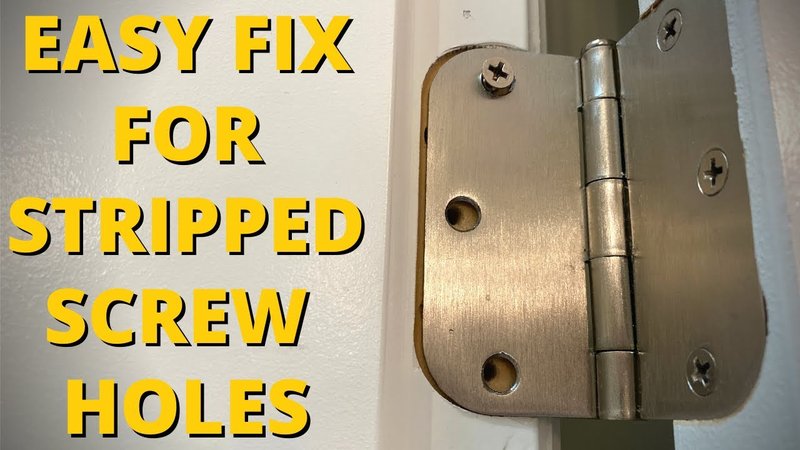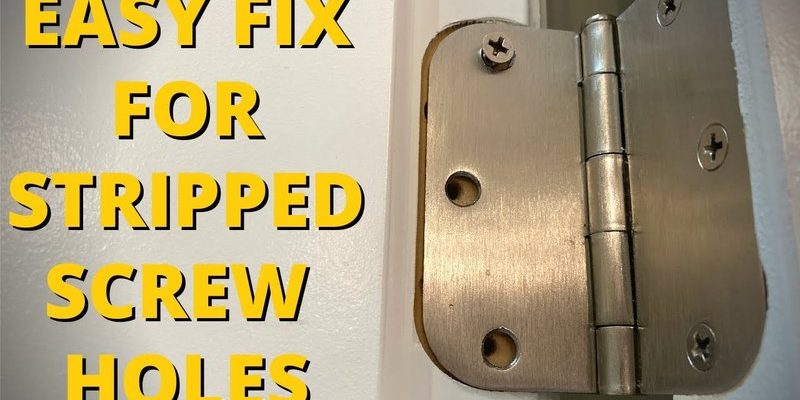
A cracked hinge may seem like a minor issue, but it can lead to bigger problems, like uneven wear on the door or even damage to the door frame. Just picture this: a door that sticks, doesn’t close, or swings the wrong way, turning a simple entrance into a frustrating obstacle course. If you’re using a standard hinge rather than a specialized one, don’t worry. Repairing a cracked hinge is usually a straightforward fix with the right tools and techniques.
In this guide, we’ll walk through how to repair a door hinge that’s cracked at the screw holes. Whether you’re tackling it during a weekend project or just trying to fix an annoyance, it’s easier than it sounds.
Understanding the Problem: Why Hinges Crack
Cracking at the screw holes of a door hinge often occurs due to wear and tear over time. Think of a door hinge as a pivot point that’s continually under pressure. Each time you open or close the door, the hinge bears the weight and movement of the door. If the hinge isn’t properly installed or if the door is too heavy, it can cause the wood around the screw holes to crack.
It’s also worth noting that environmental factors contribute to hinge issues. Changes in humidity can affect the wood, causing it to expand and contract, which could lead to stress fractures around the screws. If your building is older, you might find the wood more brittle or prone to cracking.
You might be wondering how to tell if your hinge is cracked. Look for visible splits around the screw holes. If the door feels wobbly or doesn’t close properly, those are signs you may have a problem worth fixing.
The Tools You’ll Need
Before diving into the repair, it’s essential to gather your tools. Having everything on hand will make the process smoother. Here’s a quick list of what you’ll need:
- Screwdriver: Choose a flathead or Phillips screwdriver depending on your hinge screws.
- Wood glue: This will help reinforce the area around the cracked hole.
- Dowels or wood filler: You can use wooden dowels or filler for additional support when the cracks are severe.
- Drill: If you need to create new holes or use dowels, a drill will come in handy.
- Clamps: These will help hold things in place while the glue dries.
Having all your tools ready before starting is like prepping for a big cooking project—it saves time and frustration in the long run!
Patching the Cracked Screw Holes
Once you’ve identified the cracked hinge, it’s time to get to work. Start by removing the hinge from the door. Use your screwdriver to take out the screws—and be sure to keep track of them. You don’t want to lose any, especially if they’re specific to your hinge.
Next, inspect the damage. If the cracks are minor, a good wood glue will suffice. Apply a generous amount of glue into the cracks and around the screw holes. Here’s the thing: you want to ensure it’s well-coated but not oozing out everywhere. This is where clamps come into play. Once the glue is applied, use clamps to hold the area tightly together. Let it dry as per the glue instructions.
If the cracks are deeper or if you’ve already stripped the screw holes, you may need to consider using dowels or wood filler. If you choose dowels, drill a hole deeper into the wood and insert them using more glue. This creates a more robust anchor for the screws when you reattach the hinge.
Reinforcing the Hinge with Screws
Now that the cracks are patched, it’s time to put the hinge back on. Here’s a tip: when you reinsert the screws, use a little wood glue on the screws themselves. This will help prevent future stripping and cracking.
If your hinge seems loose even after the repair, you can opt for longer screws. Longer screws provide better support by going deeper into the wood, offering a more secure hold. Just be careful not to overtighten them, as that can cause additional cracking.
Once everything is back in place, check to see how the door functions. Open and close it a few times to ensure the hinge feels stable and secure.
Alternatives to Repairing a Cracked Hinge
In some cases, repairing the hinge might not be enough, especially if it’s severely damaged. If that’s the case, you may want to consider replacing the hinge entirely. It’s typically an easy swap. Measure the old hinge, purchase a new one that matches, and you can install it with similar steps as before.
Alternatively, you can look into heavy-duty hinges if your door is particularly heavy. These stronger options can distribute weight better and reduce strain, potentially preventing future cracks.
Preventing Future Cracks
Once you’ve repaired the hinge, you probably want to avoid this problem again. Here are some preventative tips to keep your hinges healthy:
- Regular Maintenance: Check your hinges regularly for any signs of wear or damage. A little prevention goes a long way!
- Lubricate: Use a lubricant on your hinges to reduce friction and wear. This simple step can extend the life of the hinge.
- Monitor Weight: Ensure that the door isn’t overloaded with items like heavy decorations that could put extra strain on the hinge.
By keeping an eye on your door hinges, you can avoid the hassle of needing repairs in the future.
Repairing a door hinge that’s cracked at the screw holes doesn’t have to be overwhelming. With the right tools and techniques, you can restore your door to its original functionality. Remember, it’s about taking it step by step and being patient with the process.
Whether you’re patching up those cracks or considering a replacement, your door can be back on track in no time. So next time you encounter that creaky door, you’ll know just what to do. Happy repairing!
